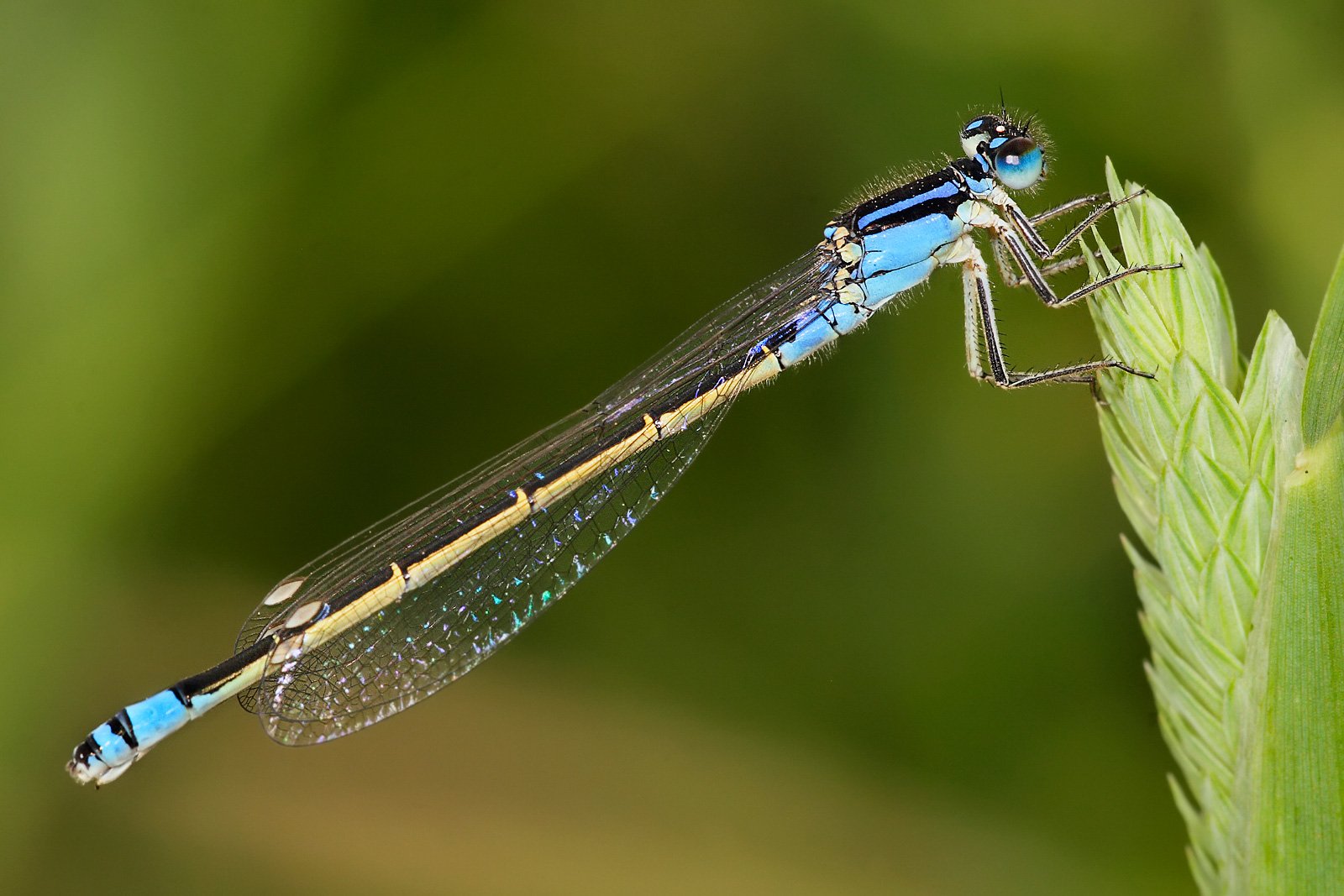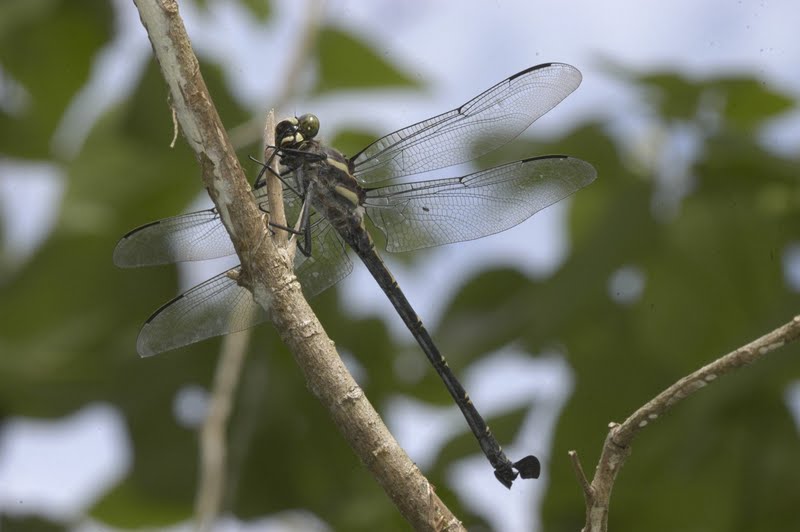The damselflies and dragonflies of Australia

WITH THEIR superb flying skills and excellent vision, dragonflies and damselflies are perfectly designed to hunt smaller insects such as mosquitoes and midges.
These predacious creatures belong to the ancient order Odonata, a group of winged insects with slender, aerodynamic bodies and toothed jaws.
Damselflies are typically smaller and slimmer than dragonflies. Most also hold their wings closed above the body when at rest, whereas dragonflies generally hold theirs spread out.
From the iridescent swamp bluet of south-eastern Australia to the nomadic wandering pennant, from the colourful dragonflies of the north-eastern rainforests to the yellow-striped flutterer, there are 325 species of dragonfly and damselfly to discover in Australia.
These insects typically inhabit environments with fresh water, where they lay their eggs. Dragonfly and damselfly larvae use gills to breathe under water and feed on aquatic invertebrates, tadpoles and even small fish.
With an adult wingspan of up to 170 mm, Queensland’s giant petaltail is the largest of Australia’s species, and one of the largest in the world. Yet it’s a mere dwarf compared with the fossilised dragonflies from the Carboniferous period. These true giants had wingspans up to 700 mm.
Here are some of our favourites.
A COMMON BLUETAIL Ischnura heterosticta
Common bluetail larvae inhabit slow-moving and even slightly brackish water. They can change colour during their development to camouflage with surrounding vegetation.
Wingspan: ca 40 mm
Distribution: Australia-wide

A common Bluetail.
AUSTRALIAN DUSKHAWKER Austrogynacantha heterogena
This strong flyer can be found hunting for small insects at twilight. As with all dragonfly and damselfly species, the duskhawker copulates in a ‘wheel’ position: claspers at the tip of the male’s abdomen grasp the female, and subsequent contact of the genitalia enables him to transfer his sperm into storage sacs in the female. She will later use the sperm to fertilise eggs as they are laid.
Wingspan: ca 80 mm
Distribution: Australia-wide except Tasmania, most of Victoria and southern SA

Australian Duskhawker.
EASTERN PYGMYFLY Nannophya dalei
A diminutive dragonfly with a crimson tail that resembles a red-hot poker, the eastern pygmyfly inhabits boggy seepages and swamps.
Wingspan: ca 40 mm
Distribution: Tasmania and coastal NSW, SA and Victoria

Eastern Pygmyfly.
YELLOW-STRIPED FLUTTERER Rhyothemis phyllis
The slow-flying yellow-striped flutterer inhabits coastal areas of northern and north-eastern Australia, and is also found in parts of South-East Asia and the Pacific.
Wingspan: Up to 80 mm
Distribution: Northern NT and WA; coastal Queensland and NSW

Yellow-Striped Flutterer.
GIANT PETALTAIL Petalura ingentissima
The giant petaltail’s common name refers to its distinctive, ornamental tail. One of the world’s largest species, it is thought to have ancestry dating back almost 200 million years.
Wingspan: Up to 170 mm
Distribution: East coast of Queensland

Giant Petaltail.
TAU EMERALD Hemicordlia tau
The larvae of the tau emerald are found in places as diverse as roadside ditches and suburban garden ponds, where they sometimes feed on small invertebrates and tadpoles. ‘Large swarms of adults may form for mass feeding frenzies.
Wingspan: ca 70 mm
Distribution: Australia-wide except Cape York peninsula and north-western Australia

Tau Emerald.
SWAMP BLUET Coenagrion lyelli
Look for this bright blue insect around streams, river pools, lakes and ponds in south-eastern Australia. This vivid damselfly was first described in 1913 by UK-born naturalist, entomologist and former Sydney Grammar School teacher Robin John Tillyard.
Wingspan: Up to 40 mm
Distribution: Tasmania and coastal NSW and Victoria

Swamp Bluet.
TROPICAL ROCKMASTER Diphiebia euphoeoides
The highly aggressive larvae of this damselfly are found among rocks in shaded rainforest streams. Like all other dragonflies, it’s armed with a heavily built, extendable food-capturing organ, called a labium, capable of inflicting devastating damage on its prey.
Wingspan: ca 65 mm
Distribution: Coastal northern Queensland

Tropical Rockmaster.
A WANDERING PENNANT Macrodiplax cora
A salt-tolerant nomad, the wandering pennant is found in coastal Australia and tropics and subtropics in other parts of the world. Males typically hunt by waiting at an observation point, dashing after their prey and returning to the same perch to consume their meal.
Wingspan: Up to 75 mm
Distribution: Coastal NT, WA, Queensland and northern NSW

A wandering Pennant.
READ MORE:




